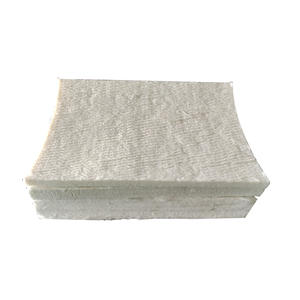
PCE Monomer VPEG 2400 Polycarboxylate Superplasticizer Ether Factory

Silica Aerogel Insulation Blanket for house, building, wall, roof, floor.

Der Preis von Aerogel Kugel for Isolierung Aerogel Fassade

Foaming Agent For Soap SLES 70 Sodium Lauryl Ether Sulfate 70% Anionic Viscoelastic Surfactant For Dishwashing Liquid Soap SLES

Factory Direct Supply Pce Concrete Water Reducer C900 Polycarboxylate Supperplasticizer

fireproof aerogel waterproof fabric felt blanket with CE ASTM
Concrete fibers, also known as fiber-reinforced concrete, are an essential component in modern construction materials. These fibers, made from various materials, are dispersed evenly throughout the concrete mixture to enhance its mechanical properties, primarily improving tensile strength, durability, and resistance to cracking. By reinforcing concrete with fibers, structures can withstand greater stresses, reducing the risk of cracks forming due to shrinkage, impact, or heavy loads.
Common types of fibers used in concrete include steel, synthetic (like polypropylene, polyester, or nylon), glass, and natural fibers (such as cellulose). Each type offers specific benefits tailored to different applications, with steel fibers providing high strength, synthetic fibers enhancing resistance to plastic shrinkage cracking, and glass fibers improving impact resistance.
Application of Concrete Fiber:
1、Industrial Flooring: In warehouses, factories, and industrial plants where heavy machinery operates, concrete fibers are added to increase the floor's load-bearing capacity and abrasion resistance, minimizing cracks and damage from constant use.
2、Pavement & Roads: Fiber-reinforced concrete is used in road construction to reduce rutting, cracking, and potholes caused by traffic loading and temperature changes.
3、Pre-cast Concrete Products: From manhole covers to concrete pipes, adding fibers improves product durability and reduces the potential for damage during transportation and installation.
4、Shotcrete: In applications where concrete is sprayed onto surfaces, such as tunnel linings or slope stabilization, fibers help maintain integrity during application and increase overall bond strength.
5、Concrete Repair Works: For patching or repairing concrete structures, fiber reinforcement can prevent the recurrence of cracks and extend the life of the repair.
6、Building Construction: In walls, slabs, and foundations, fibers can reduce the need for traditional steel reinforcement bars, simplifying construction and reducing costs while maintaining structural integrity.
Cie-china is professional in lightweight concrete and foam concrete solutions. We can supply concrete foaming agent, superplasticizer, aerogel and foam concrete strength enhancer for lightweight concrete mix, CLC blocks all over the world. Send us an email or click on the needed products to send an inquiry.
Payment Term:
L/C, T/T, Western Union, Paypal, Credit Card etc.
Shipment Term:
By sea, by air, by express, as customers request.
Storage conditions:
1) Store in a dry environment at room temperature.
2) Avoid damp and high temperature.
3) Use immediately after opening the inner packing bag.
Q: Are concrete fibers a replacement for steel reinforcement bars?
A: No, fibers are generally used to complement steel reinforcement, enhancing the concrete's performance against cracking and providing secondary reinforcement. In some cases, they can partially replace small diameter reinforcement in non-structural applications.
Q: How much fiber should be added to concrete?
A: The dosage rate varies depending on the fiber type and the desired properties. It typically ranges from 0.5% to 3% by volume of concrete. Consultation with the fiber manufacturer or a structural engineer is recommended for optimal results.
Q: Do concrete fibers affect the workability of the concrete mix?
A: Depending on the fiber type and dosage, there might be a slight effect on workability. Synthetic fibers usually have less impact, while steel fibers can make the mix more viscous. Adjustments to the mix design, such as using superplasticizers, can help maintain the desired workability.
Q: Are concrete fibers visible in the finished product?
A: Most fibers are designed to be evenly distributed and largely invisible once the concrete has cured, although some synthetic fibers may leave a faint pattern on the surface if used in high concentrations.
Q: Are concrete fibers environmentally friendly?
A: Many types of fibers, especially synthetic and natural fibers, offer eco-friendly options. However, the overall sustainability also depends on the production process and end-of-life disposal. Steel fibers, while not biodegradable, can often be recycled.
Ask a quote for the latest price and one of our team members will respond as soon as possible. Fields marked with * are required.




